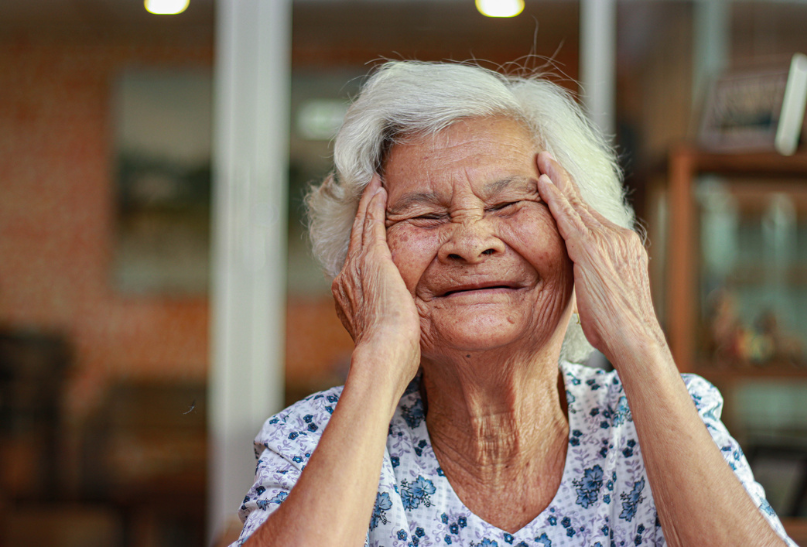
Globally life expectancy is increasing and with older adults living longer, often needing long term care when they become increasingly dependent and frail. With increasingly frail older people, the need for long term care also increases, providing greater incentive for providers to improve the quality of care and experience for their customers.
One facet of quality of care being strongly advocated is to hear more from the perspective of residents, in particular, the attainment of an optimum quality of life (QoL). Yet, despite the proliferation of quality of life measures, those with utility in the longer term care setting are unfortunately limited, in a sector that needs it the most.
The assessments and tools used to measure quality of life for this frail cohort have been lacking. The availability and appropriateness for use in the elder care setting has struggled for decades to find a suitable solution.
Mostly due to them being frailer than the general population and having substantially different needs as they age, such as many are no longer able to make financial decisions for themselves. Furthermore as they no longer work or have an active social life and move into care against their will. An over-emphasis on health and physical function and a lack of resident-centred measures or “basic needs” such as those reported in Maslow’s Hierarchy of Needs, may produce a negative picture of quality of life, than actually experienced by this group of people.
Other challenges with existing QoL tools are that they focus on areas beyond the elder care providers control, and whilst they are good to know, they do not help the provider improve the care and happiness for the older person and make improvements to their life.
Recent research in the area of factors impacting quality of life in long term care setting, established a tool Happy Life Index.
The Happy Life Index looks at 7 main areas: A literature review of publicly available research papers to understand the link between the 7 consumer quality domains on the overall positive impact on the quality of life and or experience for residents when these areas are met;
- Staff presence (formerly staff ratios)
- Food quality
- Care quality
- Staff friendliness
- Management
- Cleanliness & environment
- Resident activities
The focus of Happy Life Index is to give providers the data to support ways they can immediately work on improving the lives of the elderly.
Giving aged care providers ways through which they can have a direct impact on shaping the experiences for people in their homes.
The Happy Life Index, provides operators with a baseline assessment of how they are performing from the perspective of residents, giving them greater insights on how they can improve and providing oversight over their service so there are no surprises.
With significant dynamic data mapping already in place, the industry benchmarking data is unique and already impacting improvements in quality of care.
Consumer perceptions of quality are increasingly varied and are informed by a range of quality of life and experiences that go beyond the clinical.
In this changing context, the way the aged care sector measures and delivers on quality is undergoing significant transformation. The Happy Life Index has been playing a leading role in this transformation for some time.
It’s the little (big) things that most people take for granted until one day they can’t do it for themselves.
If those needs remain unfulfilled overtime it impacts quality of life.
It’s the little (big) things that matter when it comes to happiness and quality of life for aged care residents.
And if we look at Maslow’s Hierarchy of needs in relation to older people – it shows how if we get the “fundamentals of care” right then we can start to look at the more aspirational things like self-fulfillment.
In relation to meeting older people’s needs, The Happy Life Index as a measuring tool compliments the theory behind Maslow’s Hierarchy of Needs (Maslow, 1943).
Maslow interpreted different needs of people from the basic needs to older people’s needs.
It contains basic needs like: physiological needs, safety and security; psychological needs: love and belonging; self-fulfillment: self-esteem, self-actualisation.
Once the lower level of needs are fulfilled, the willingness of needs will go up to the next level.
If a resident lacks some needs which were used to be fulfilled, then the resident would rather prior refill the needs which he or she is short of than any other new needs.
However, needs such as necessities of life, nursing care are more or less obligatory in older people‘s later life despite the needs could be diverse depending on their social environment, life course.
Moreover, older people are more focused on basic needs, and psychological needs are more advanced, and self-fulfillment needs are least followed.
In Maslow’s hierarchy of needs, it showed that one level will not be sought until the lower level is covered.
However, older people’s willingness to love and belong are intense, and the basic needs do not need to be fulfilled in order to go up into the psychological needs.
For example, older people have a strong will for family (love and belonging), even though their needs of health (safety and security) might not be fulfilled.
Thus, to adjust the pattern, we must realise that they always desire to be loved no matter if their basic needs are fulfilled or not.
About the research project University of South Australia & Digital Health CRC
- Establish the reliability and acceptability of the Happy Life Index seven QoL indicators
- Prepare a publication describing the development of the HLI, and resulting reliability, acceptability
- Compare pre and mid COVID HLI responses to understand the impact of COVID on people living in residential care facilities
About the Happy Life Index
The Happy Life Index was launched in 2019, after four years of co-design with consumers, health professionals and providers, as a sector-wide digital benchmarking tool for residential aged care, home care and retirement villages that reports on consumer experiences in care.
CarePage is the founding organisation of The Happy Life Index, which was established for the inclusion of all-of-sector participation.






